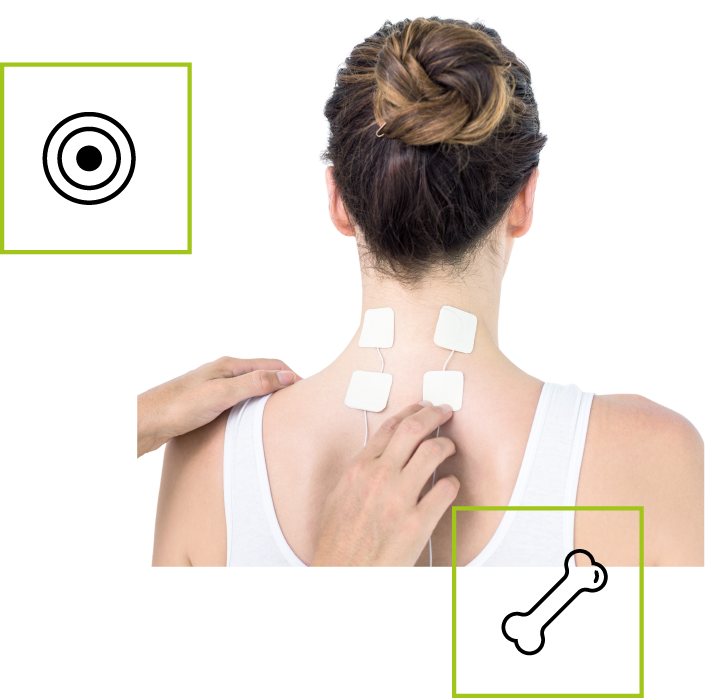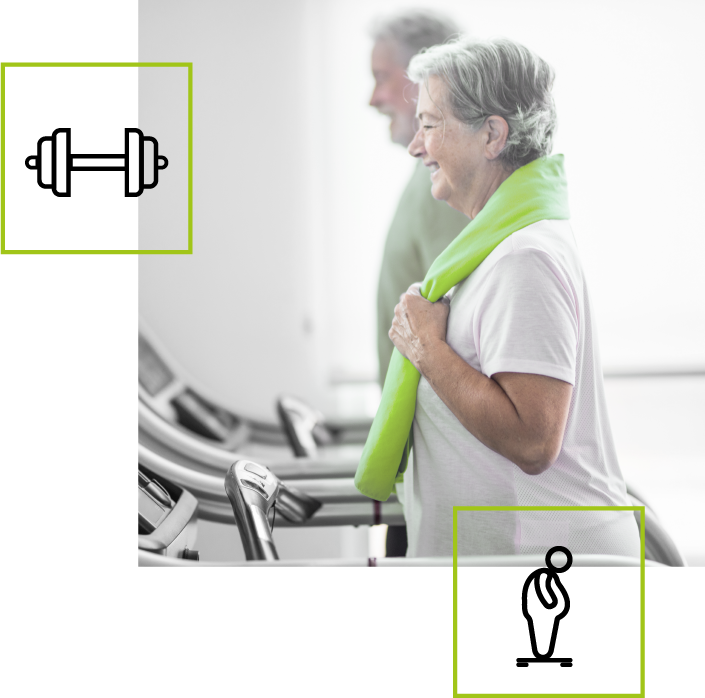Vibrotherapy is an effective method for managing lumbar spine pain
Vibrotherapy causes pain reduction in a manner consistent with nature, improving blood and lymph circulation and acting as an anti-inflammatory, but also appropriately modulating neuronal transmission and neuromuscular activity.
How does vibrotherapy relieve lumbar spine pain?
Vibration stimulates both superficial and deeply localized pain receptors. One of the effects is a long-term increase in the pain threshold, resulting in less pain. In addition, for pain caused by inflammation, mechanical vibration with the right therapeutic parameters does a great job of reducing the inflammatory response. Vibrotherapy also promotes the strengthening of muscles, whose flaccidity and weakness is a common cause of low back pain.


When and for whom?
Vibrotherapy is used according to individual needs until the feeling of pain subsides. It is most commonly used for post-traumatic rehabilitation, strain or chronic pain in the lumbar spine. Vibration, moreover, increases the effectiveness of painkillers, the doses of which can thus be gradually reduced, protecting the liver.
Effectiveness
The effectiveness is confirmed by numerous scientific studies, some of which have been compiled in Polish at vibrotherapy.com and vibrotherapy.pro. The vibration frequency used by Vitberg RS is considered to be the most effective for pain relief. Remember that the best results are obtained if the vibratory stimulus is applied exactly where the pain occurs, that is, when it acts on the lumbar spine.

Lundeberg T, Nordemar R, Ottoson D. Pain alleviation by vibratory stimulation. Pain. 1984 Sep;20(1):25-44
Benefits of vibrotherapy

No side effects

Action confirmed by scientists and practitioners

Perceptible effects from 1 treatment

Long-lasting effects through systematic use
Choose the right product
We will help you select a set of modules that suits your conditions.
Lumbar spine pain
A particularly severe problem for a large part of the adult population is pain in the lower and thoracic spine. It is worth noting that this applies not only to people doing professional work requiring heavy lifting, but also to people working for long periods of time in the same position, particularly burdensome is the sitting position. Lumbar pain affects young and old alike. It can take the form of short-term pain resulting from injury or overload. Lumbar pain can also be associated with existing degeneration and lesions, in which case it often turns into a chronic form and chronic pain. It then has a very negative impact on the patient’s daily functioning and often leads to a significant reduction in quality of life and physical activity. Back pain regardless of severity is a very annoying and troublesome phenomenon. Therefore, the question of how to relieve lumbar spine pain seems so important?
Lumbar spine pain – causes
Most often the cause of pain is overloading of the lumbar spine. This often manifests itself as severe and sharp pain in the spine, which intensifies with movement. Ailments of this type usually pass after a few days. They usually only require rest and sometimes painkillers and anti-inflammatory drugs. The cause of lumbar spine pain can also be lumbar discopathy. Damage to intervertebral discs causing lumbar spine pain, which can also lead to spinal nerve compression and inflammation (sciatica). This results in pain radiating to the legs. In extreme cases, herniation of the intervertebral disc can occur. Disc disease can cause pain in the lumbar spine when bending down, but in some cases the discomfort worsens when upright or walking. Depending on the severity of the disease, drug treatment and physical therapy are used, and in severe conditions, surgery is used. The reason for back pain in the lumbar region, can also be interarticular joint degeneration, enthesopathy, compression fracture of a vertebra or sacroiliac joint disease. Since there can be quite a few reasons for lower back pain, it is important not to underestimate the discomfort and to consult a doctor in case of prolonged lower back pain.
What helps for lumbar spine pain?
When back pain occurs and does not pass or its intensity is very high, you should see a doctor or physiotherapist. Depending on the reason for the ailment, he will tailor the best set of measures. This can include pharmacological treatment to reduce pain and inflammation, physical therapy or rehabilitation to improve the patient. While all of these measures can significantly reduce back pain, it is also important to remember to prevent further lumbar spine problems. In this case, physical activity, loss of excess weight and proper hygiene are important. It is important to respond appropriately to what signals our body gives us. When back pain prevents us from doing certain activities, let’s limit them until we recover. We can also help ourselves. In an acute muscle strain, cold compresses and rest help at first. For other ailments, heat is recommended to help and provide relief. A warming ointment or warm compress, relaxes tense muscles and has an analgesic effect. Spinal pain is also effectively removed by physical therapy and rehabilitation. Regular exercise, swimming or vibrotherapy treatments reduce pain, strengthen and improve the lumbar region and other parts of the body. This will prevent back pain from recurring. Do not forget that pain is a warning sign and when the lumbar spine hurts, these symptoms should not be downplayed or ignored. With properly selected treatment, you will not let back pain stop you. If you are bothered by back and spine pain we invite you to read our other posts.
Lumbar spine pain – vibrotherapy
Vibrotherapy has pain-relieving as well as muscle-strengthening effects. Effectively reduces back and spine pain as well as other pains. The analgesic effect of vibrotherapy for spinal pain is usually explained by inhibiting the activity of neurons in the spinal cord. This reduces pain signals sent by C-fibres, which cause pain that patients describe as sharp, jerking or throbbing and difficult to localize. Detailed studies on the subject were conducted by Drs. Sang-Soo and Sung-Bum from Korea, among others. Pain-relieving effect is only one of the effects of vibrotherapy. No less important is muscle strengthening, so that patients can begin kinesitherapy, or exercise. The use of vibrotherapy as a method to prepare the patient for exercise is particularly recommended for the elderly, those suffering from obesity after an injury, or those whose physical activity was previously at a very low level.
The effectiveness of vibrotherapy for pain in lower and upper parts of the back is confirmed by Polish and foreign studies. Professor Lundeberg from Sweden, working on various devices with pain-relieving effects, conducted an experiment in which among nearly 400 subjects suffering from chronic and acute forms of pain, about 70% experienced pain relief after vibration stimulation. Most patients reported the best results when moderate pressure was applied and the apparatus was used with a cushion with a large treatment area. His findings were used to develop RAM Vitberg+ (the predecessor to Vitberg Recovery System).





